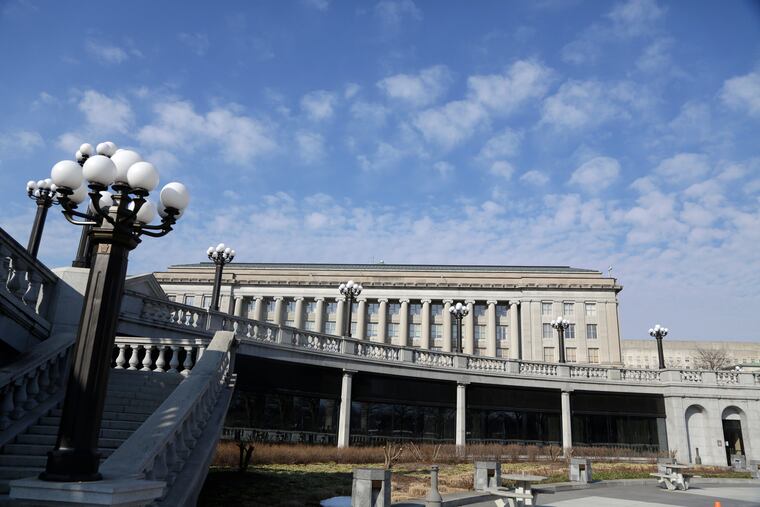Ensuring Pennsylvania’s Latino voters have a say | Opinion
The Latino population of our state has grown tremendously. New statewide districting maps must reflect this reality.

One hint of the quiet changes taking place in Lancaster County has been the appearance of a new generation of roofing companies, contracting firms, and restaurants with the names of owners like Ortiz or Garcia, an indication of the county’s changing population. Another sign is in the county’s public schools, where an increasing number of schoolchildren are Latino. Churches, grocery stores, neighborhoods have all been reflecting these changes as well.
These gradual shifts — greater numerically in Philadelphia and its surroundings, but perhaps more obvious in counties like Lancaster, Lehigh, and Cumberland — are a portent of the broader demographic changes that have been taking place across Pennsylvania. Over the last decade, all population growth in Lancaster County, for example, was the result of increases in the numbers of communities of color, and today 11% of Lancaster is Latino. In Reading, the Latino population grew more than 25% since 2010, and now makes up 68% of the city’s population. In Allentown, Latinos make up more than half the city’s residents.
According to the U.S. Census, between 2010 and 2020, the Latino community in Pennsylvania overall grew by 45.85%, and they now make up more than 8% of the commonwealth’s population. Without these new residents, Pennsylvania’s population — and the population of almost every county in the state, including Philadelphia’s — would have shrunk, with real consequences for the state’s representation in Congress and the resources it receives from the federal government, which benefit every resident in the state.
Now the changes driven by Latino population growth require recognition in the state’s politics as well.
On Dec. 16, the Pennsylvania Legislative Reapportionment Commission, led by Chairman Mark Nordenberg, adopted its preliminary plan for the commonwealth’s state House and Senate legislative districts. The redrawing of these districts, which the Pennsylvania Constitution says must happen once a decade to reflect changes in the state’s population, is an important step forward in ensuring that each Pennsylvanian, regardless of race, ethnicity, or political party, has an equally effective voice to elect the representatives of their choice.
The preliminary plan for House and Senate districts recognizes the significant growth in communities of color like Latinos across the commonwealth. Further, as charged by the 1965 Voting Rights Act, which asks states to take into consideration the representation of historically underrepresented minority communities, Pennsylvania’s preliminary plan reverses decades of partisan gerrymandering that led to the dilution of the political power of Black, Latino, and Asian Pennsylvanians by packing them into a small number of districts with incredibly high populations of people of color.
» READ MORE: Former U.S. attorney general: Republican redistricting maps disenfranchise voters of color | Opinion
The commission’s preliminary plan also acknowledges the growth of Latino communities across Pennsylvania’s smaller municipalities such as Allentown, Norristown, and Reading. Over the last decade, each of these regions has seen significant growth in new Latino residents. Newly redrawn districts in each of these municipalities will allow their fast-growing Latino communities to be able to elect candidates of their choice while also recognizing the growing diversity of Pennsylvania.
Pennsylvania’s legislative map today has just four districts in which the Latino community can elect its candidate of choice. Given the reality of the state’s demographics as revealed by the latest census counts, this simply doesn’t allow for the fair and equitable representation of the state’s Latino residents. The draft preliminary plan put forward by the commission more than doubles the number of majority-Latino districts to nine, while also establishing additional districts in which Black, Latino, and Asian voters can come together in a coalition to elect candidates to represent them in the statehouse. Through these reforms, the Legislative Reapportionment Commission furthers the goals of the Voting Rights Act and gives all Pennsylvanians a fair shake.
Last month, former Attorney General Eric Holder wrote in The Inquirer that “an increasingly diverse state should have maps that accurately reflect that trend with congressional and state legislative districts drawn in a manner to empower growing and diverse populations.” The commission’s draft preliminary plan goes a long way toward meeting the goal of equal representation for all Pennsylvanians. All Pennsylvanians deserve a fair shot at having their voice heard. The legislative maps proposed by the state Legislative Reapportionment Commission represent significant progress toward making that a reality.
Michael Jones-Correa, an expert on Latino politics in the United States and coauthor of “Holding Fast: Latino Immigrant Civic Engagement and Resilience in Polarizing Times,” is President’s Distinguished Professor of Political Science at the University of Pennsylvania.